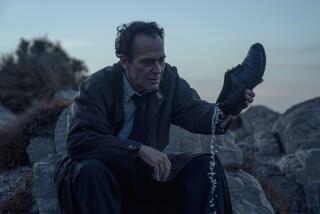Critic’s Pick: ‘Tristana’ a lesson in rule breaking
Sometimes it seems as if the only collective memory of the great Spanish surrealist Luis Buñuel is that startling close-up of a razor slicing through an eye. It was in “Un Chien Andalou,” his first film, a collaboration with another legendary Spanish surrealist, Salvador Dali. Released in 1929 and only 16 minutes long, the images — bizarre and dangerous — still rattle the sensibility.
The shot was seminal to be sure, but it is a shame that for many in this country, it’s the one that defines Buñuel’s long, rebellious and prolific career.
Which makes the arrival of the remastered “Tristana” starring Catherine Deneuve, Franco Nero and Fernando Rey such a rare treat. In a special one-week run at the Nuart Theatre beginning Friday, it offers the chance to remember the range of one of cinema’s true auteurs.
OSCARS 2013: Nominee list | Ballot | Snubs & surprises
Buñuel’s groundbreaking — and rule breaking — wasn’t just visual. The stories he chose, like this one he and Julio Alejandro adapted from the Benito Perez Galdos novel, were just as often on a razor’s edge. The deepest cuts usually saved for the bourgeois.
The film, which came out in 1970 after a censorship battle with the Franco regime, catches — and releases — all the tension of shifting sexual mores. You can almost sense the director’s pleasure in taking apart the duplicities of a patriarchal Spanish society, the long-standing sexual double standard for men and one young woman’s revolt against convention. No one’s hands are clean.
It is a love story of sorts that begins in death. Tristana is not a child, but she is not married either, so after her mother’s funeral, she’s become the ward of a nobleman, Don Lope (Rey). He’s a notorious ladies man, and having a beautiful young woman under his roof is too much temptation. Any wall of propriety soon breaks down, and he brings her into his bed.
If you want to see the difference between acquiescence and love, simply watch Tristana’s face. As she so often is, Deneuve is a marvel moving from carefree girl to used woman.
Don Lope is overbearing as well as old and increasingly fearful of losing her. As his possessiveness rises, so does her discontent. There are dreams that involve Don Lope’s not-too-neatly severed head that are classic Buñuel. The director is also playing with the idea of self-image and in that Tristana will pay a price for her beauty.
As so often happens at times like these, a young man comes into the picture. Horacio (Nero) is an artist Tristana stumbles across on one of her walks through the city. He wants to paint her. With those legendary cheekbones, who wouldn’t? Soon enough Tristana is having to make a choice between the man of means and the man she loves.
All the intrigue of Tristana and Don Lope’s debates about love, commitment and freedom, all of her flirtations with Horacio exist in Buñuel’s ever-shifting palette. As she is increasingly repelled by the old man, the quarters are tight; there is literally no room for her to move. In those few afternoons she is able to escape him, the stone streets she wanders are beautifully empty and serene, as if she is still contemplating the details of her life.
The film comes a few years after Buñuel’s “Belle de Jour,” which arguably is the movie that turned Deneuve into an international movie star. At this point, Nero is already very much the heartthrob, his breakthrough having come in 1966’s classic spaghetti western “Django,” a moment Quentin Tarantino paid homage to with a Nero cameo in his “Django Unchained.”
But it is between the actress and the old horse portrayed by Rey that the serious sparks fly. Bitterness, regret, revenge get the best of love.
For all of his shock, Buñuel could be unusually subtle with color and so it was in “Tristana.” Time had distorted the few remaining prints, but the restoration has brought them back — beautiful, muted, restrained, like the woman Tristana could never manage to be.
‘Tristana’
MPAA rating: PG-13 for thematic elements and some disturbing images
Running time: 1 hour, 38 minutes, Spanish with English subtitles
Playing: Landmark’s Nuart Theatre, West Los Angeles
PHOTOS AND MORE
VIDEO: The making of ‘Argo,’ ‘Les Miz’ and more
ENVELOPE: The latest awards buzz
PHOTOS: NC-17 movies: Ratings explained
More to Read
Only good movies
Get the Indie Focus newsletter, Mark Olsen's weekly guide to the world of cinema.
You may occasionally receive promotional content from the Los Angeles Times.











